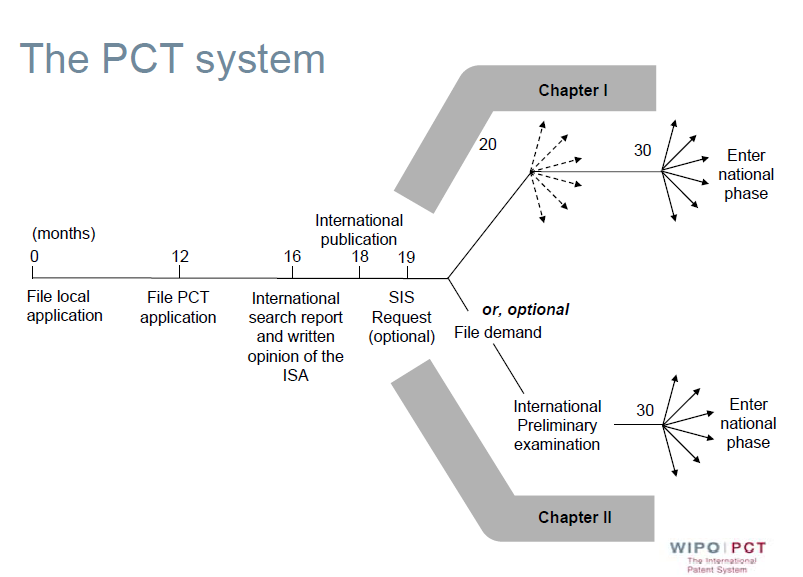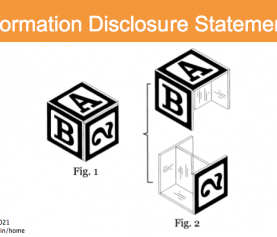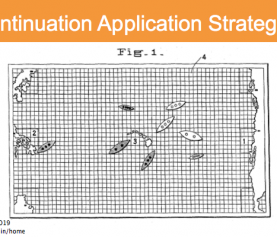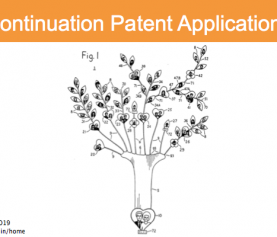PCT patent application basics
The Patent Cooperation Treaty (PCT) allows patent applicants to relatively easily apply to protect an invention in one or many countries. Note that a PCT patent application is not an “international patent” – there’s not really any such thing. Rather, a PCT patent application allows a patent applicant to submit one application that can be used to initiate the patent examination process in one or many countries.
What is a PCT patent application?
A PCT patent application is a patent application that is filed under the rules of the PCT, an international treaty which 148 countries, as of Dec. 2015, have ratified (notable holdouts are Argentina and Pakistan). The patent application is prepared largely as you would for filing in a national patent office, but with PCT-specific administrative paperwork identifying and describing the PCT patent application. By preparing and filing a patent application in accordance with the PCT rules, an applicant starts a process that can lead to simultaneous patent prosecution in some or all of the 148 countries party to the PCT.
How do you file a PCT patent application?
Like any patent filing, this should only be done with the assistance of an attorney. A national or resident of any PCT-party State (the PCT term for “countries”, a source of endless confusion to patent applicants!) can file a PCT patent application in any designated PCT “Receiving Office”, meaning a national IP office that is authorized under the PCT to have PCT patent applications filed in it. The USPTO is one of the Receiving Offices, and is referred to in PCT shorthand as US/RO. One can also file a PCT patent application with the International Bureau (IB) of the World IP Organization (WIPO), if the country you live in or are a citizen of doesn’t have its own patent office, or for certain strategic reasons. Each RO is available to nationals and residents of certain countries, and has rules on which language(s) a PCT patent application may be filed in. If you file with the International Bureau, you can file the PCT patent application in any language, but must file the Request (the mandatory paperwork) in one of the ten PCT publication languages: Arabic, Chinese, English, French, German, Japanese, Korean, Portuguese, Russian or Spanish.
What happens once you’ve filed a PCT patent application?
When you file a PCT patent application, there will be an “international search report” 16 months from the relevant priority date of your patent application (the priority date is either when you filed, or the priority date of an earlier-filed application whose priority date you’re claiming). 18 months from the priority date, the PCT patent application will be published. Later, once you’ve paid all the required fees and provided any required translations, your PCT patent application will be examined under the applicable procedures for the countries you designated. Note that the image used with this post is WIPO’s image, available at the USPTO.
How much does a PCT patent application cost?
A PCT patent application will (or should) cost the same amount to prepare as it would to prepare as a national patent application (for a sense of that, have a look at my blog post on How much does a patent application cost?). But there may be additional costs to file it as a PCT patent application, largely for translation and PCT filing fees. Translation may be required depending on the language in which you have had the patent application prepared, and on which Receiving Office and International Search Authority is available to you. The initial PCT filing fees comprise a Transmittal Fee, a Search Fee, and an International Fee, and if you file at the USPTO the cost is a minimum of $1756 if you qualify as a Micro Entity under USPTO rules and select the USPTO as the International Search Authority. If you must file as a Small Entity or Large Entity, or if you select a different International Search Authority, the cost will be higher. And if your application is over 30 pages, including the PCT paperwork, there is an additional $16 cost per page – and 30 pages is quite short.
If you choose the optional International Preliminary Examination, there is an additional fee of minimum $358 (unless you are a resident and national of a less-developed country, in which case $208 of that $358 is discounted 90% to $20.80).
When you move to the National Stage, in which your PCT patent application is examined by the patent office of each country, you must pay fees to each of those countries. In some circumstances, those fees will be reduced from what you would have paid if you had applied directly to each country.
Why file a PCT patent application?
A PCT patent application is a convenient way to initiate the process of applying for patent protection in multiple countries. If you are certain that only one country will ever matter to you, you should consider filing only in that country directly. The same may be true if you’re certain that you need patent protection in only two, three, or four countries. But if you’re not sure which countries may become important to you in the 30 months after when you file, a PCT patent application may work well to allow you time to choose which countries you want to file in – and provide you with a relatively simple path to initiating patent protection in those countries, and more. Many US patent applicants start by filing a national US patent application first (provisional or non-provisional), and then file a PCT patent application for the same subject matter within a year, claiming the benefit of the priority date of the US application filing date.
Do you have questions?
If you have questions, I’d be glad to hear from you in the comments (no confidential info in this public forum, of course!), by phone at 617-340-9295, or via my Contact Me page.







[…] after an invention has been disclosed. Depending on what countries you’re considering, a PCT application may make […]
[…] If you need more background on what a PCT patent application is, take a look at my blog post PCT Patent Application Basics. If you’re preparing to file, take a look at my post on what information is needed for any […]